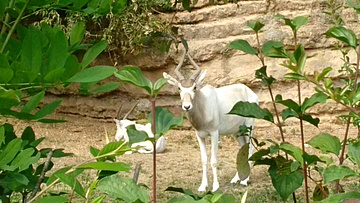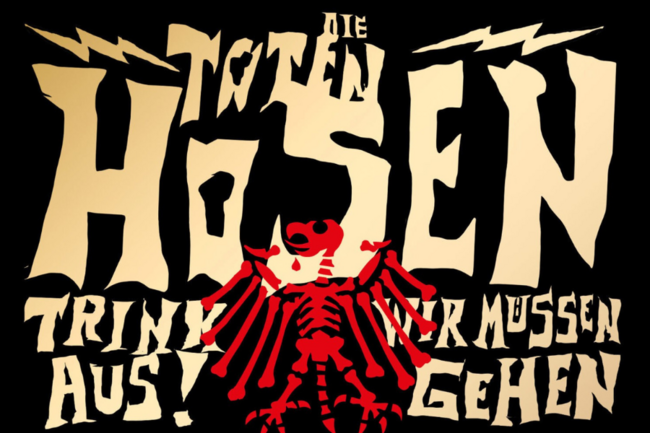Three Addax antelopes have moved in on the African savannah
(kus) Since the end of September, there has been life again on the former sable antelope enclosure. Following the loss of the last sable antelope due to illness, Frankfurt Zoo has decided to offer space on the largest outdoor enclosure on its grounds to an endangered species - the addax, also known as mendes antelopes.
Initially, three females will occupy the enclosure. Two of the antelopes, two-and-a-half-year-old TINNE and nine-month-old TOMMIE, come from Kolmården in Sweden and already moved into their new home on September 19. The third of the bunch, JEANNE, also one year old, joined them shortly afterwards on 23 September from Hanover, where the studbook for this antelope species is also kept.
"The three female antelopes spent their first days with us in the stable, first getting used to their new surroundings and their new roommates. Since last week, they have been able to use their large outdoor enclosure together - the largest in the entire zoo," explains zoo director Professor Dr. Manfred Niekisch.
Addax antelopes (Addax nasomaculatus) belong to the horsebucks and are closely related to their predecessors, the sable antelopes. Their original range was once northern Africa, across the Sahara to Sudan. Today, the species is extremely endangered. Current figures from the World Conservation Union (IUCN) suggest fewer than 100 animals survive in a small area in Niger. Poaching and habitat loss due to the exploitation of oil deposits are again the reasons for the population's decline. Currently, addax are kept in only seven zoos in Germany, and a total of 45 times in the rest of Europe.
Because it can get very hot in the rocky deserts and semi-deserts, the antelopes are most active in the twilight hours when it is a bit cooler. Unlike their related species, the Addax can survive for long periods without water, as they cover their moisture requirements with their food, i.e. grasses, herbs and roots. The animals are very sociable and often live in family groups, which usually consist of one male and several females with their young. However, they can also be found as solitary animals. They are not tied to one place and in the wild they travel long distances in search of food and water within a year. "At the zoo, they are spared this search, which is why they don't have to undertake long hikes here," explains zoo director Niekisch.
"With their bright fur and powerful twisted horns, the Addax are a real eye-catcher. There are plans to add a buck to the females in the near future so that we can also contribute to the preservation of this wonderful species," Niekisch said.












